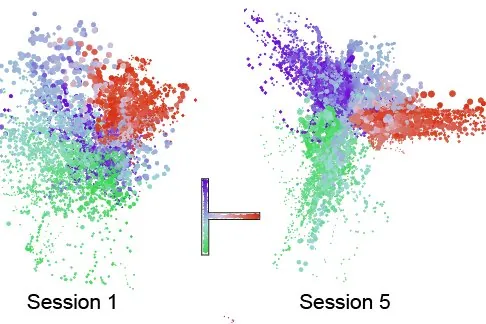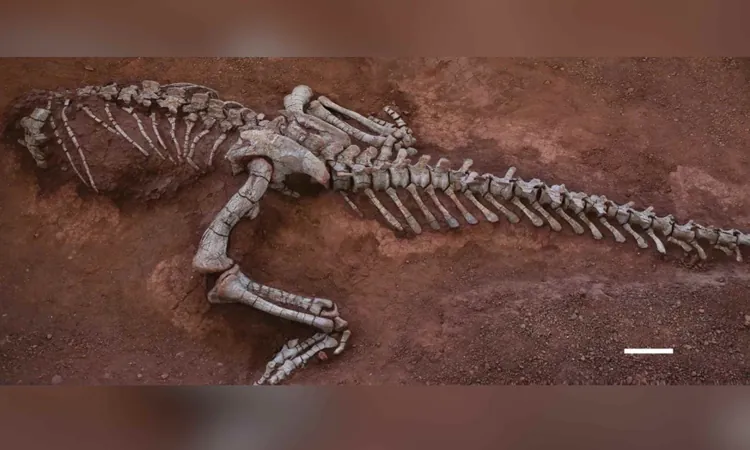
Unlocking the Secrets of the Brain: How Sleep Enhances Our Ability to Create Mental Maps
2025-01-10
Author: Nur
Introduction
When you step into an unfamiliar city, each new sight brings a mix of excitement and confusion. You may remember enchanting gardens hidden in side streets, but navigating these places can be a challenge until your brain has time to form a cohesive picture of the neighborhood. Exciting research from MIT's Picower Institute for Learning and Memory sheds light on how our brains develop comprehensive cognitive maps of spaces and underscores the critical role that sleep plays in this process.
The Role of the Hippocampus
For years, scientists have recognized the role of a specific region in the brain, the hippocampus, which contains "place cells." These neurons activate when an animal occupies a particular location. However, the true magic lies not only in remembering individual spots but also in how these places connect to create a larger, coherent geography — what researchers call cognitive maps. Though cognitive maps were first theorized in 1948, understanding their formation has remained a mystery until now.
Recent Findings
A recent study, featured in the December issue of *Cell Reports*, has revealed that this mapping capability hinges on subtle changes in neuron activity over days, specifically within cells that are not strongly attuned to individual locations. Interestingly, researchers found that sleep was essential for these "weakly spatial" cells to enhance and refine the hippocampus's representation of space, leading to a richer cognitive map.
The Experiment
Lead author Wei Guo pointed out, “On Day 1, the brain doesn’t represent the space very well. Neurons remember individual locations, but do not form an integrated map until Day 5. A coordinated effort among these neurons is necessary to create a reliable map.” To uncover the brain's mapping mechanism, Guo and his colleagues allowed mice to explore simple mazes over several days without any rewards, relying on a natural process termed "latent learning." As they monitored the mice's brain activity, they noticed how the neurons behaved differently during exploration compared to sleep.
Significance of Sleep
Previous research has shown that during sleep, animals tend to replay their explored routes, a process that helps refine their memories. The findings revealed that while “place cells” showed consistent activity, this alone did not account for cognitive map development. By examining less engaged neurons, Guo discovered that these weakly spatial cells gradually began correlating their activity with other neurons’ firing patterns, serving as connectors between distinct locations to weave a more comprehensive mental map.
The Connection Between Cells
This function is crucial since the weakly spatial cells help bridge gaps between locations that place cells identify individually. In essence, they allow the brain to synthesize a seamless representation of a physical environment through intertwined relationships.
The Experiment on Sleep
But perhaps the most astonishing revelation from this research is the indispensable role of sleep when forming these mental maps. In a fascinating experiment, some mice were given the chance to sleep between maze explorations, while others were not. Those that slept exhibited a notable enhancement in their cognitive maps, whereas the sleep-deprived group showed no improvement. This reinforces the idea that sleep not only consolidates memories but also fine-tunes the brain's understanding of spatial relationships.
Mental Navigation
While the cognitive maps encoded by the mice weren’t direct representations of the mazes, they provided a schematic view that could guide mental navigation. This is similar to how humans can visualize their surroundings, like planning a route to a croissant shop using invisible mental landmarks.
Future Research Directions
Looking ahead, the study opens the door to exploring what additional information weakly spatial cells may incorporate into cognitive maps — we inherently view our spaces through more than just isolated points. Future research could reveal how our environments’ meanings and significance shape our brain's representations of them, shedding light on the intelligence underlying human learning and navigation.
Conclusion
The researchers emphasized the importance of unsupervised and implicit learning, demonstrating that even in the absence of rewards, substantial neural changes can occur when animals freely explore their surroundings and rest. Ultimately, this groundbreaking research not only uncovers the intricate relationship between space, memory, and sleep but also paves the way for deeper inquiries into how we understand and interact with the world around us. Stay tuned as scientists unravel the layers of cognitive mapping, and discover how this knowledge could potentially transform our understanding of human cognition!



 Brasil (PT)
Brasil (PT)
 Canada (EN)
Canada (EN)
 Chile (ES)
Chile (ES)
 Česko (CS)
Česko (CS)
 대한민국 (KO)
대한민국 (KO)
 España (ES)
España (ES)
 France (FR)
France (FR)
 Hong Kong (EN)
Hong Kong (EN)
 Italia (IT)
Italia (IT)
 日本 (JA)
日本 (JA)
 Magyarország (HU)
Magyarország (HU)
 Norge (NO)
Norge (NO)
 Polska (PL)
Polska (PL)
 Schweiz (DE)
Schweiz (DE)
 Singapore (EN)
Singapore (EN)
 Sverige (SV)
Sverige (SV)
 Suomi (FI)
Suomi (FI)
 Türkiye (TR)
Türkiye (TR)
 الإمارات العربية المتحدة (AR)
الإمارات العربية المتحدة (AR)